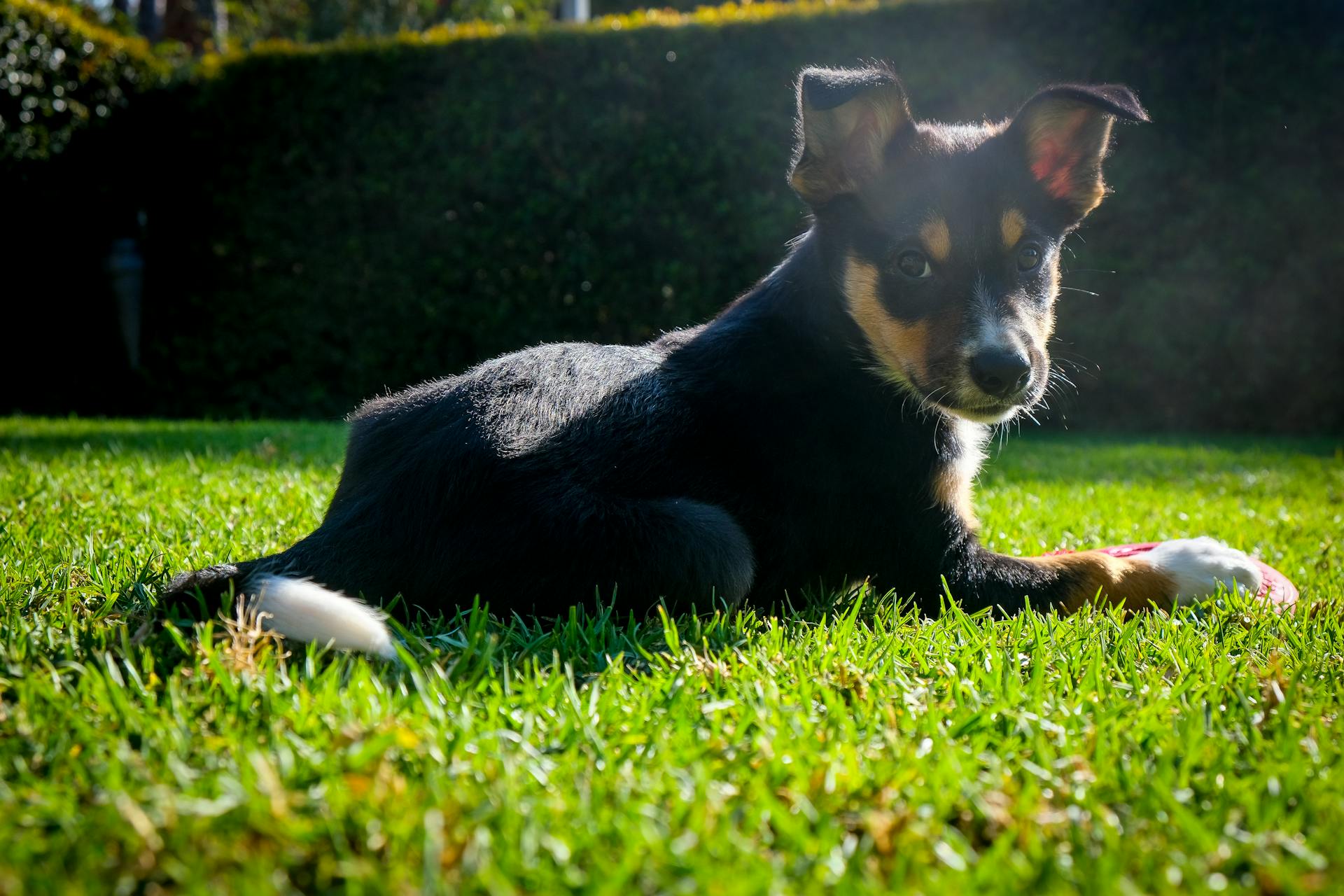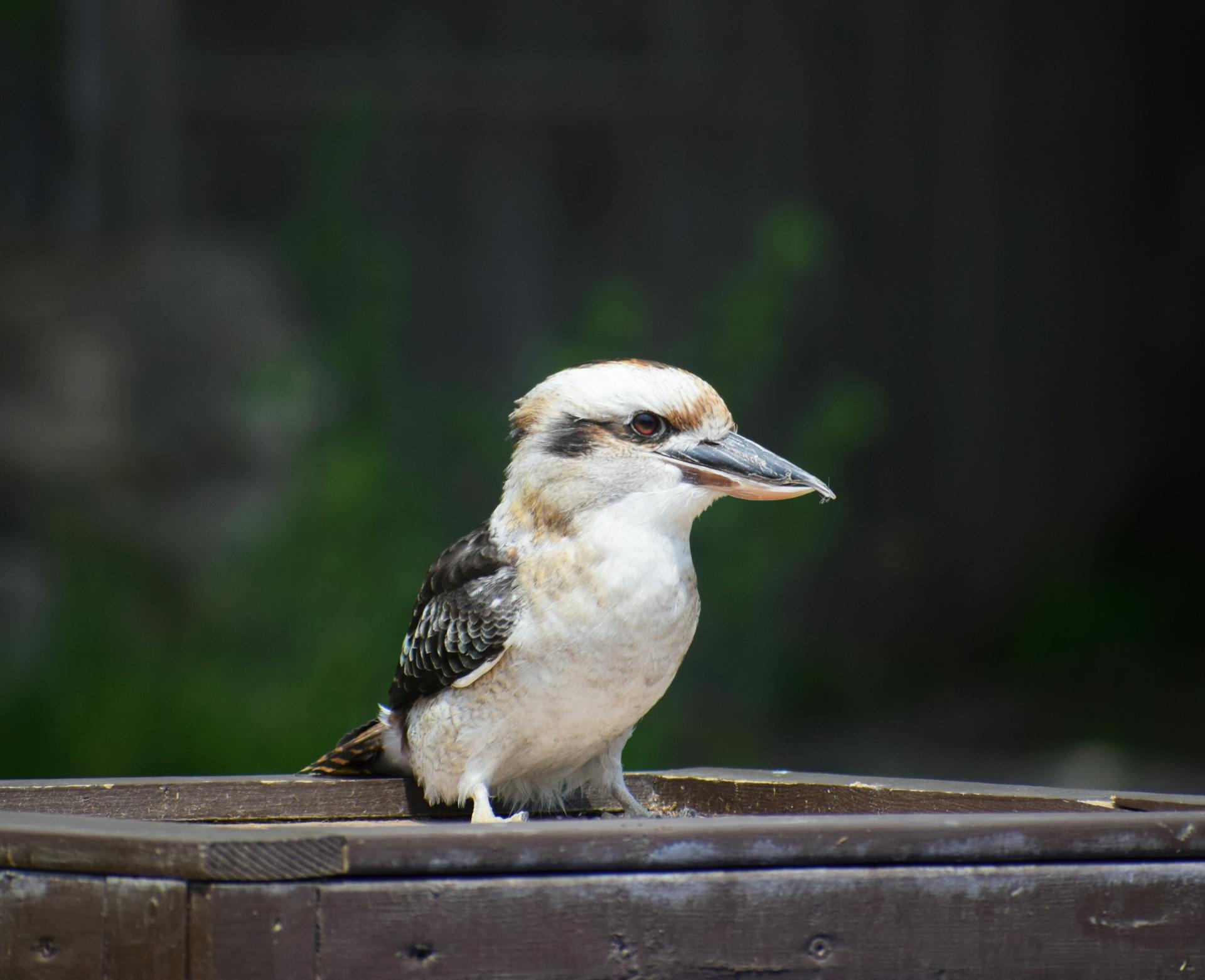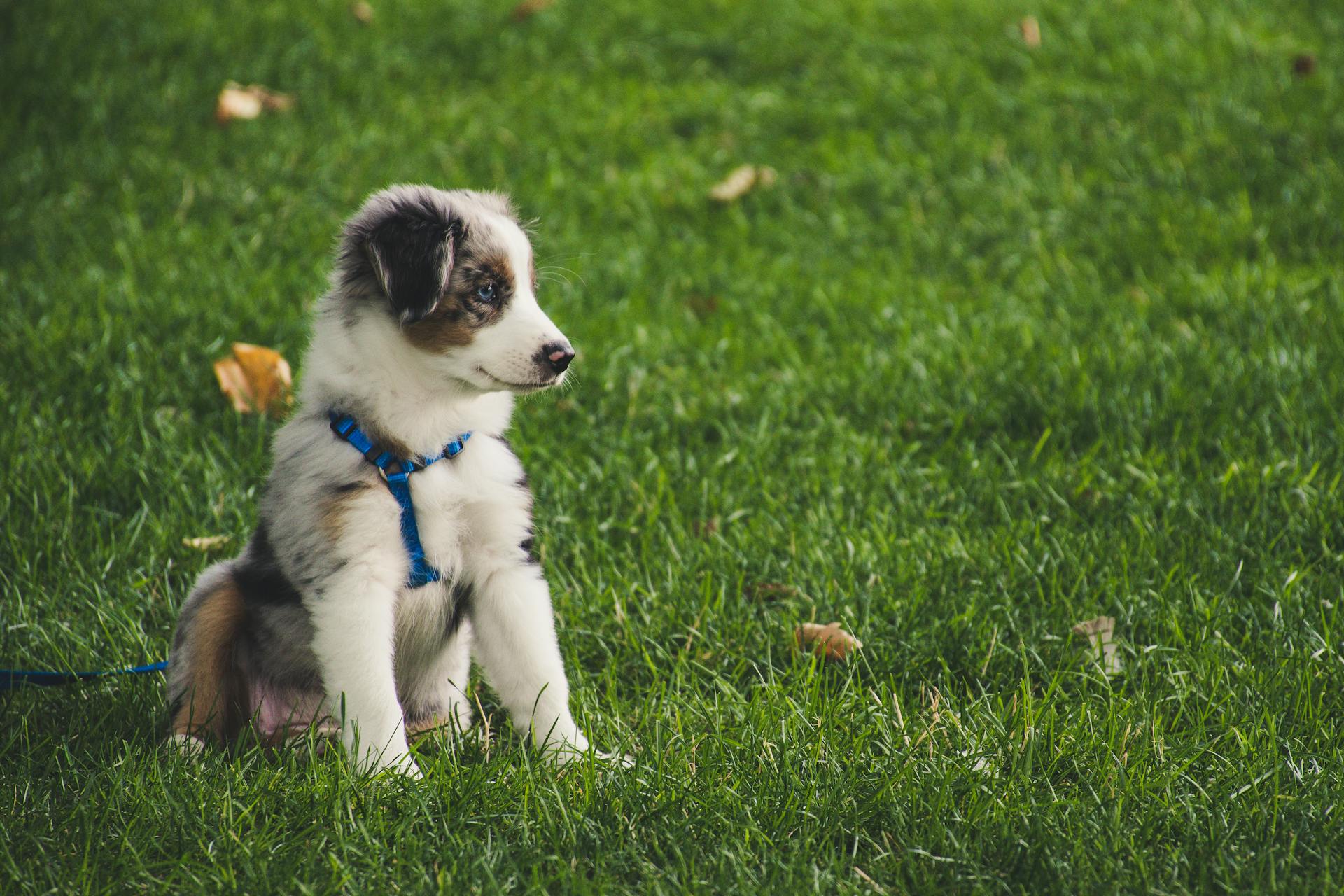
The Australian Working Kelpie is a breed that's built for action, with a rich history that dates back to the 19th century.
They were originally bred to herd sheep and cattle on Australian farms, and their high energy levels and strong work ethic made them the perfect fit for this demanding job.
Australian Working Kelpies are highly intelligent dogs that thrive on physical and mental stimulation, making them a great match for active families or individuals.
They're also known for their loyalty and affection towards their owners, and they make great companions for those who are willing to put in the time and effort to train and exercise them.
History and Origins
The Australian Working Kelpie is a breed with a rich and complex history. The exact origins of the breed are unclear, but it's believed to have developed from working Collies imported by early landholders in Australia.
These Collies were likely Scottish Collies, as the breed is affected with Collie Eye Anomaly or CEA. One of the foundation females for the Kelpie breed was a black and tan working Collie named Kelpie, owned by George Robertson of Worrock Station.
Kelpie was bred with an all-black dog named Moss, and their offspring is thought to be the start of developing the Working Kelpie breed. The breed was then developed further by breeding with cattle dogs and dingoes.
The modern Working Kelpie can be traced back to the 1870s, and its genetic makeup is a result of its Collie, Cattle Dog, and Dingo ancestry. The breed was developed to perform a specific job, and its physical characteristics were secondary to its ability to work.
The Australian Kelpie is part of the American Kennel Club Foundation Stock Service, and the United Kennel Club fully recognizes it as a member of the Herding Dog Group. The breed's name is thought to come from the Celtic mythology figure of Kelpie, a shape-shifting aquatic creature.
Explore further: American Kennel Club Lancashire Heeler
Physical Characteristics
The Australian Working Kelpie is a medium-sized dog with a compact body and muscular legs.
He has a broad chest and is a little longer than he is tall, making him well-suited for herding.
His hindquarters are strong and well-developed, allowing him to turn and leap quickly when working.
The Kelpie's head is narrow and long, with a black nose that can be self-colored or brown depending on his coat color.
His eyes are dark, with oval shapes and a medium size that gives him an eager and alert expression.
His coat is a double coat that is dense, short, and weather repellent, with a straight and harsh outer coat and a softer undercoat.
The coat can appear longer during the winter months due to his undercoat coming in thick to protect him from the elements.
The Australian Working Kelpie comes in several different colors, including black, blue, brown, fawn, chocolate, or black and tan.
Appearance
The Working Kelpie is a medium-sized dog with a well-muscled body that's built for endurance.
He has wide-set eyes that are oval in shape and medium-sized, with an eager and alert expression.
His eyes can be dark brown, blue, or amber in color, with dark brown being the most desirable.
A different take: Dark Border Terrier
A Working Kelpie's nose should be black, but it can also be brown or self-colored depending on his coat color.
He has a short, straight topcoat that's weather-resistant, with a dense undercoat that's softer.
The Working Kelpie's coloring can be almost any coloration and markings associated with the breed, except for solid white or brindle.
In contrast, the Australian Kelpie has a compact body and muscular legs, with a broad chest and strong hindquarters.
He has a narrow head with a black nose, although it can also be self-colored or brown depending on his coat color.
The Australian Kelpie's double coat is dense, short, and weather-repellent, with a straight and harsh outer coat and a softer undercoat.
Readers also liked: Pembroke Corgi Tri Color
Similarly Sized
If you're looking for breeds that are similarly sized to the Working Kelpie, you'll find some great options. The Slovensky Kopov is 100% similar in size, making it a great match.
The Australian Kelpie and Working Kelpie are also identical in size, as they're essentially the same breed. This means you can expect similar physical characteristics from these two breeds.
You might enjoy: Dogs Similar to Border Collies

The Istrian Shorthaired Hound is another breed that's close in size, with a 98% similarity to the Working Kelpie. This makes it a great option if you're looking for a similar build.
Here's a list of breeds that are similarly sized to the Working Kelpie:
- Slovensky Kopov - 100% Similar
- Australian Kelpie - 100% Similar
- Working Kelpie - 100% Similar
- Istrian Shorthaired Hound - 98% Similar
- Anglo-Francais de Petite Venerie - 97% Similar
- Deutsche Bracke - 97% Similar
Care
Australian Working Kelpies are a high-energy breed that requires regular exercise to stay happy and healthy. They need an extreme amount of exercise, with some owners needing to spend hours a day exercising their kelpie.
To keep their coat healthy and glossy, brush your Australian Working Kelpie once a week or more often during shedding season. A slicker brush is the best tool for the job, and a de-shedder can be used when they're shedding heavily.
Their nails will naturally wear down from working on rough terrain, but it's still a good idea to check them every few weeks to make sure they're not getting too long.
Discover more: How Much Exercise Do Border Collies Need
Australian Working Kelpies are generally clean and odorless, but they may require a bath a few times a year, especially if they've been working with livestock. If they do get dirty, a dry shampoo can be used to freshen them up until their next bath.
Here's a quick rundown of the regular grooming tasks you'll need to perform on your Australian Working Kelpie:
Regular brushing will help remove loose hair and keep their coat in good condition. If you want to reduce shedding, you can brush your kelpie more often, but once a week is usually sufficient.
Australian Working Kelpies are a great choice for active owners who want a loyal and hardworking companion. With proper care and attention, they'll thrive and be a valuable member of your family.
Health and Nutrition
Australian working kelpies need to eat energy-dense, high-quality food to fuel their active bodies. Their diet should be carefully managed to prevent weight gain, which can lead to joint disorders like arthritis and hip dysplasia.
Excess weight can also contribute to other health issues like diabetes. Older kelpies or those recovering from an injury might need a lower-calorie diet to maintain a healthy weight.
Your veterinarian or breeder can advise you on what to feed your kelpie and how much to feed.
Expand your knowledge: Australian Kelpie Mix Dog
Common Health Problems

Australian kelpies are generally a very healthy breed, but like all breeds, they can be prone to certain genetic issues. These issues can affect the health and well-being of your kelpie, so it's essential to be aware of them.
One of the genetic issues that can affect Australian kelpies is Cerebellar Abiotrophy, a developmental disorder of the brain. This disorder can have a significant impact on your kelpie's quality of life.
Collie Eye Anomaly is another issue that can affect Australian kelpies. This disorder can cause several problems with the eyes, including vision loss, which can be devastating for both you and your kelpie.
Progressive Retinal Atrophy is a term used to describe a group of related degenerative eye diseases that can lead to blindness in Australian kelpies. This is a serious condition that requires regular veterinary check-ups and care.
Here's a list of some of the common health problems that can affect Australian kelpies:
- Cerebellar Abiotrophy: A developmental disorder of the brain
- Collie Eye Anomaly: A disorder that can cause several problems with the eyes including vision loss
- Progressive Retinal Atrophy: A term used to describe a group of related degenerative eye diseases that can lead to blindness
Diet and Nutrition

Australian kelpies need high-quality food to fuel their active bodies, especially working kelpies.
Kelpies are unlikely to become overweight if they get enough exercise.
Older kelpies or those recovering from an injury might need a lower-calorie diet to prevent weight gain.
Excess weight contributes to joint disorders like arthritis, elbow dysplasia, and hip dysplasia.
A lower-calorie diet can help prevent weight gain and related health issues like diabetes in older kelpies or those recovering from an injury.
You might enjoy: How Long Do Australian Kelpies Live
Training and Behavior
Australian Working Kelpies are highly intelligent and trainable dogs. They have been bred for their working abilities and exhibit a strong work ethic and natural instincts. With positive reinforcement techniques such as treats, praise, and play, you can reward desired behaviors and keep your Kelpie engaged.
Australian Kelpies thrive when they have a job to do, so providing them with tasks or activities that fulfill their working nature is essential. Activities like agility, herding trials, or obedience competitions can be excellent outlets for their energy and drive. Consistency in training methods and expectations is also key, with clear cues and gestures for commands.
To channel their energy appropriately, early socialization and training are crucial. Without the right mental stimulation, Australian Kelpies can easily get bored, leading to bad behaviors. Providing plenty of mental stimulation through puzzle toys, interactive games, and obedience training sessions can help satisfy their need for mental challenges.
Broaden your view: Are Border Collies High Energy
Training and Behavior
Australian Kelpies are highly intelligent and trainable dogs, bred for their working abilities and strong work ethic. They respond well to positive reinforcement techniques such as treats, praise, and play to reward desired behaviors.
To satisfy their need for mental stimulation, provide your Australian Kelpie with plenty of puzzle toys, interactive games, and obedience training sessions. This will help keep them engaged and prevent boredom.
Early socialization is crucial for Australian Kelpies, especially to ensure they are accepting of friendly strangers and comfortable in an urban environment. This should start early in life, ideally from an early age.
Australian Kelpies thrive when they have a job to do, and activities like agility, herding trials, or obedience competitions can be excellent outlets for their energy and drive. These activities also help bond with their owners.
To overcome training challenges, be patient, consistent, and provide clear guidelines. Working with a professional dog trainer experienced in herding breeds can be beneficial in overcoming specific training difficulties.
Here are some key tips for training an Australian Kelpie:
- Use positive reinforcement techniques such as treats, praise, and play to reward desired behaviors.
- Provide plenty of mental stimulation through puzzle toys, interactive games, and obedience training sessions.
- Be consistent in your training methods and expectations.
- Engage their natural herding instincts by providing them with tasks or activities that fulfill their working nature.
- Be patient and work with a professional dog trainer if needed.
Exercise Requirements
Australian Kelpies are highly active dogs that require a significant amount of exercise to stay happy and healthy. On average, they need at least 2 hours of vigorous exercise per day.
This can include activities such as long walks, jogging, playing fetch, or participating in dog sports. They enjoy learning new tasks and can become bored or frustrated if not given enough mental challenges.
For Australian Kelpie puppies, exercise needs should be approached with caution. Puppies have developing bones and joints that are more susceptible to injury. It's essential to provide them with age-appropriate exercise, such as short play sessions and brief walks.
Here's a rough guide to exercise for Australian Kelpie puppies:
- 5 minutes of exercise per month of age, up to twice a day
- Exercise should increase gradually, but always follow the advice of your vet
Australian Kelpies reach full exercise capacity at an adult level around 12 to 18 months of age. However, individual dogs may vary, so it's essential to monitor their energy levels and adjust their exercise accordingly.
Frequently Asked Questions
What is the difference between Australian and Working Kelpie?
The main difference between an Australian Kelpie and a Working Kelpie is that the Working Kelpie prioritizes function and ability over physical appearance. This breed remains true to its herding roots, with a focus on intelligence, agility, and working ability.
Are Australian Kelpies common in the US?
Australian Kelpies are relatively rare as pets in the US, but can be found working on ranches and farms in North America. They are more commonly known as working dogs in Australia.
What is the difference between a show kelpie and a Working Kelpie?
The main difference between a Show Kelpie and a Working Kelpie is their purpose: Show Kelpies are bred for appearance, while Working Kelpies are bred for their working ability. This distinction affects their selection and breeding goals.
Featured Images: pexels.com


